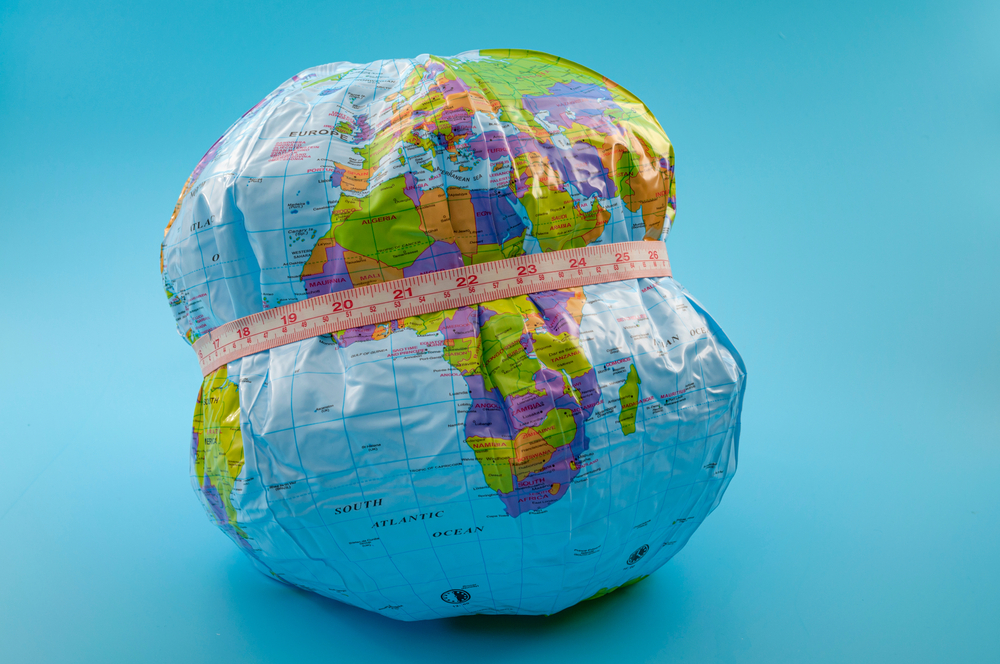While famine rages in one part of the world, in other parts obesity is climbing to record rates. The Centers for Disease Control and Prevention issued reports in 2016 detailing how the US obesity epidemic was getting worse, not better, in spite of numerous awareness and prevention efforts. In 2016, 40 percent of American women were obese. Obesity is defined as weight that is higher than what is healthy relative to height. Among all American adults, 38 percent are obese as are 17 percent of teenagers. More than 5 percent of men and 10 percent of women are morbidly obese, meaning they run a much higher risk of diseases related to their obesity.
This is not only an American epidemic. From 1975 to 2014, the number of men and women around the world classified as obese rose from 105 million to 641 million. Half of the human race is expected to be obese by 2025 if these trends continue (45). And by almost all accounts, the trends will continue because nothing seems to be working in the effort to stop this literal growth in humanity.
This is an excerpt from the 2019 book How the World Ends: Understanding the Growing Chaos. At that time JB Shreve explained how three core crises (population, food, and water) would contribute to a terrific rise in chaos across the globe during the next half century. By-products of these core crises would be pandemics, resource wars, social unrest, and increasing divides between rich and poor. These secondary crises would amplify the coming storm. All of that is happening now, even faster than predicted at the end of 2019. We are publishing portions of the “food crisis” section of the book here each day this week. Readers who want to go deeper are encouraged to purchase your copy of the book here.
US GDP per capita in 2017 was nearly $60,000. This is simply the total economic output of the US divided by the number of citizens living in the US in a single year. Each individual citizen’s share of the country’s GDP varies in reality, but the effects of our collective society are enjoyed by all through paved roads, military defense, operating utilities and sanitation systems, and the list goes on.
Contrast this against the GDP of the nations where famine is far more likely: 70 percent of Africa has a GDP per capita of $6,000 or less. In 2017, four nations in Africa had a GDP per capita of less than $1,000 a year. In Asia, 12 countries had GDP per capita of less than a tenth of the GDP per capita in the US. This signals a massive divide between those in the feast part of the world and those living in the famine part of the world, of which food scarcity is only one pervading issue.
For those living in areas of the world, primarily much of the northern hemisphere, where access to food is easy and distribution plentiful, we literally have almost any food (or other consumer product for that matter) available to us at the click of a button. While reading this post you can utilize your smartphone to have groceries of all kinds sent to your doorstep. Our food issues have more to do with convenience and finding the time to cook. That is why food service companies have begun offering weekly meals in a box. No longer do we need to grocery shop or select what we are going to eat for the week. We simply sign up for the automatic draft and the weekly meals are sent to our front door, needing only to be mixed and heated. The ideas of hunger and malnourishment do not really register with us. We eat all we like only to struggle with New Year’s resolutions to work off the excess weight and girth.
Food crisis for these areas of the world is learning to turn away from easy junk foods and toward healthier whole foods. If and when we fail at this, however, the options of vitamins, supplements, surgeries, and medical advances will frequently compensate for our own lack of discipline and right choices. This is the life of abundance. Concepts of famine and low food supply are usually only understood through the lens of ancient history or a late-night infomercial featuring starving African children and a charity organization that desperately needs help. It is far away, desperate, but also separate from our existence.
Starvation versus obesity, famine versus feast; these may seem like separate issues, but they are not. They are two sides of the same issue: the growing food crisis in the 21st century. It is an issue of terrible division and injustice that is perpetuated by a global food system most of us take for granted. On one side we have excess and convenience. On the other side we have desperate want and brutally harsh lack of access. It is in the division between the two extremes where we find our true modern crisis that is upending the global order and will lead to massive global upheaval in the coming years.
We will run excerpts from JB Shreve’s book How the World Ends:Understanding the Global Chaos throughout this week. These excerpts explore the nature and pathways of the global food crisis that is now arriving. Check back tomorrow for the next post in this series.










